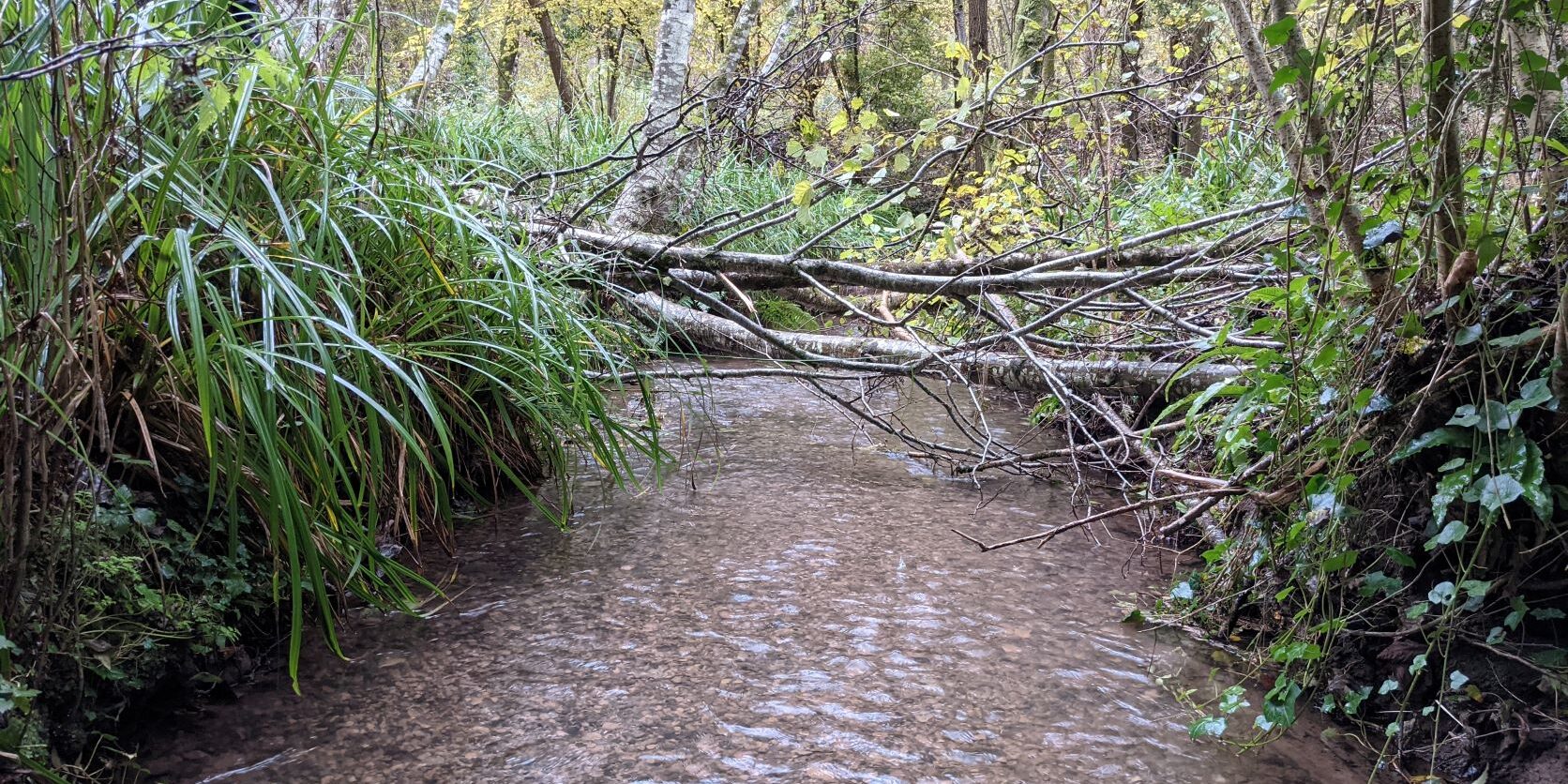The BART team have delivered a series of nature based solutions on a tributary of the River Chew, Bath and North East Somerset. Through the Environment Agency’s Water Environment Improvement Fund (WEIF), multiple interventions have been installed to improve water quality, riparian habitat and floodplain connectivity on the Candlestick Stream, a watercourse with high potential to support populations of salmonids and a diversity of riverine wildlife.
In the headwaters of the stream, working with forward-thinking landowners and local contractor, Eco-librium, BART have overseen the creation of a series of seasonal scrapes and earth bunds at the bottom of a steep arable field. Where sediment and nutrient has historically been lost to the stream it will now be captured in the wetland features, slowing the flow of surface water and reducing pollutants in the stream. Where the excess sediment has blocked surface drainage, the features will help to reduce this impact and limit localised road flooding. Top soil captured in the features will be removed by the farmer and re-applied to their land, benefiting their own production.
Downstream, BART have delivered the first phase of works in Lord’s Wood where the Candlestick stream flows through the site of an active forestry operation. Here, we worked with a local contractor, Green Mantle Ecosophy, to introduce a number of large trees into the watercourse in strategic, lower-lying locations along the stream.
By imitating natural tree fall across and into the channel, the woody material will hold back water during high flows, allowing the stream to fill its channel capacity and in places, reconnect the adjacent floodplain. The spilling of water into the surrounding woodland will enable increased water storage capacity and encourage sediment deposition, thus reducing the sediment load downstream. We aimed to increase flow diversity and promote natural geomorphological processes such as stream bed scour and gravel deposition., This is key to the enhancement of the downstream habitat, particularly for aquatic invertebrates and fish species who depend on clean stream bed gravels.
We were pleased to be able to avoid the use of wire to secure the woody material in place. Due to the weight of the material and low risk to surrounding infrastructure, we lodged the wood using chestnut posts and natural tree anchors on the banks of the stream.
During the week of the work in Lord’s Wood, local volunteers joined BART to help position and secure the woody material and created brushwood bundles to capture sediment in forestry track runoff. As the tracks get muddy over the winter surface water takes the track sediment into the stream. The volunteers used branches harvested from the woodland to form a filtering barrier between the tracks and the stream, reducing the quantity of unnatural sediments entering the watercourse.
The next phase of the project will deliver improved track drainage through the woodland, using innovative techniques, to reduce the loss of track sediment to the stream. BART will be welcoming local stakeholders to see the nature based solutions in the woodland and creating best-practice guides for landowners and land managers to enhance and restore their watercourses.
The project has been funded by the Environment Agency and forms a crucial part of our wider work in the Chew catchment. Keep an eye out for updates as the project develops. Contact George Clark, project manager, for more information on the project.







